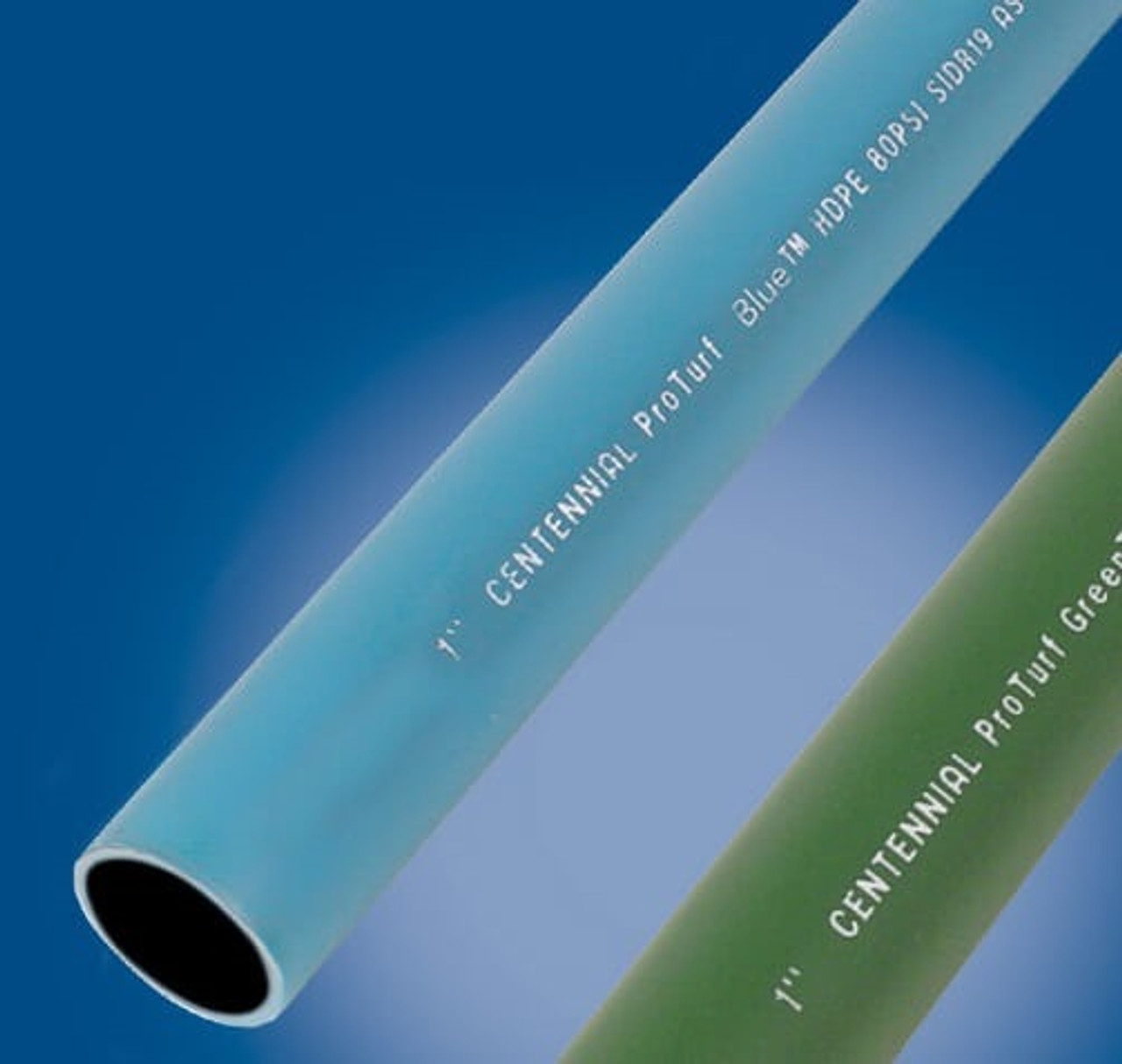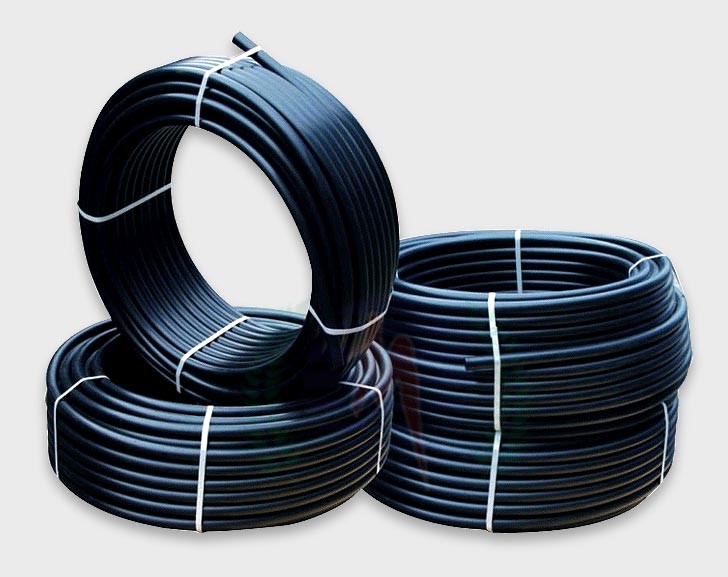Where to Find hdpe pipe in stock Midland TX for Fast Turnaround
Wiki Article
Check Out the Manufacturing Refine Behind High-Quality HDPE Pipeline and Its Applications
The production procedure of high-grade HDPE pipelines is intricate and systematic. It starts with the choice of basic materials that improve performance. Following this, ethylene undergoes polymerization to form resin, which is then formed via extrusion. Quality assurance is extremely important, making certain that the end product fulfills stringent criteria. The journey of HDPE pipelines doesn't end with production. Their applications throughout various industries expose a broader importance worth taking a look at.Understanding HDPE: Residences and Advantages

High-density polyethylene (HDPE) is a flexible polycarbonate understood for its resilience and resistance to numerous ecological elements. This product exhibits exceptional tensile strength, making it ideal for demanding applications. Its low-density framework adds to a light-weight product, promoting convenience of handling and installment. HDPE additionally showcases exceptional resistance to chemicals, which minimizes deterioration when exposed to rough compounds.
The material's reduced wetness absorption further boosts its durability, making it optimal for usage in pipelines and storage tanks. Furthermore, HDPE is immune to ultraviolet (UV) radiation, guaranteeing that products preserve their integrity also when exposed to sunshine. Its versatility allows for the development of elaborate shapes without jeopardizing strength. The environment-friendly nature of HDPE, often stemmed from recycled products, contributes to its appeal, promoting lasting practices in manufacturing. Overall, these buildings and benefits make HDPE a preferred selection for different industrial and consumer applications.
Resources Option for HDPE Manufacturing
The option of raw products for HDPE manufacturing is vital to confirm the last product meets the wanted specifications and high quality requirements. High-density polyethylene (HDPE) is primarily created from polymerized ethylene, originated from nonrenewable fuel sources such as natural gas or petroleum. The high quality of these feedstocks significantly affects the mechanical and thermal residential or commercial properties of the last HDPE.Ingredients also play a considerable function in boosting HDPE's performance, including antioxidants, UV stabilizers, and colorants, which boost longevity and resistance to environmental elements. The choice procedure must take into consideration not just the chemical composition of the raw materials however additionally their handling characteristics to ensure effective production.
The sourcing of raw materials must focus on sustainability and compliance with environmental laws, as liable techniques are critical in today's market. Inevitably, careful basic material choice lays the foundation for producing high-grade HDPE pipelines appropriate for varied applications.
The Extrusion Process: Forming HDPE Pipeline
The extrusion procedure plays a vital duty fit HDPE pipelines, beginning with careful product prep work strategies that guarantee ideal flow and consistency. Similarly vital is the design of the die, which directly influences the last measurements and surface area high quality of the pipeline. With each other, these elements add greatly to the effectiveness and top quality of HDPE pipe manufacturing.Material Prep Work Techniques
Reliable production of HDPE pipelines begins with precise product prep work methods, especially the extrusion process. Throughout this phase, high-density polyethylene material is very first dried to get rid of dampness, ensuring excellent circulation attributes. The material is after that fed right into the extruder, where it undertakes heating and melting, changing into a viscous state. This home heating procedure is very carefully regulated to keep the material's stability and efficiency. The molten HDPE is forced via a die, shaping it right into a continuous pipe kind. Proper temperature level administration during extrusion is important, as it straight impacts the product's residential properties and the final product quality. When shaped, the HDPE pipe is cooled down and cut to defined sizes, prepared for succeeding processing and applications.Die Layout Value
Accuracy in die style plays a crucial role in the extrusion process of HDPE pipes. The die functions as the final shaping device, directly affecting the pipeline's dimensions, wall surface density, and surface coating. A well-designed die guarantees consistent product flow, decreasing flaws such as abnormalities and vulnerable points. The geometry of the die must be enhanced to suit the certain buildings of HDPE, including its thickness and thermal habits throughout extrusion. In addition, the cooling price of the material as it passes through the die can significantly influence the pipeline's structural stability. Spending in advanced die technology is crucial for manufacturers aiming to produce premium HDPE pipes that satisfy industry criteria and client expectations.Top Quality Control Steps in HDPE Manufacturing
Different aspects affect the top quality of HDPE pipeline production, effective top quality control actions are important to ensure consistency and dependability in the final product (American Plastics HDPE Pipe Manufacturing). Trick top quality control techniques consist of extensive material evaluation, verifying that the raw polyethylene meets established requirements for purity qest fittings and density. During the extrusion procedure, specifications such as temperature level, pressure, and cooling time are carefully monitored to keep dimensional accuracy and structural honestyAdditionally, post-production testing is vital; producers commonly conduct hydrostatic tests to analyze the pipe's toughness and resistance to pressure. Aesthetic examinations for surface area flaws additionally improve quality guarantee. Certification from relevant standards companies, like ASTM or ISO, offers an added layer of credibility. By carrying out these detailed quality assurance procedures, manufacturers can decrease flaws, enhance performance, and make sure that the HDPE pipelines meet the details demands of different applications, eventually resulting in consumer contentment and rely on the item.
Applications of HDPE Pipeline Across Industries
HDPE pipes are made use of throughout numerous markets because of their durability and adaptability. In water circulation systems, they guarantee reliable delivery, while in wastewater administration, they supply reputable solutions for waste transportation. In addition, agricultural irrigation networks take advantage of HDPE's resistance to corrosion and flexibility, making it a perfect option for modern-day farming practices.
Water Circulation Solutions
A significant variety of industries rely upon high-density polyethylene (HDPE) pipes for effective water circulation systems. Understood for their durability and resistance to corrosion, HDPE pipelines are extensively used in metropolitan water networks, agricultural watering, and commercial applications. Their lightweight nature facilitates easy handling and installment, minimizing labor expenses and time. Furthermore, HDPE pipelines can accommodate numerous pressure levels, making them appropriate for both reduced and high-pressure systems. custom hdpe pipe manufacturing Midland TX. The versatility of the product permits seamless integration right into existing facilities, minimizing the requirement for comprehensive excavation. HDPE's resistance to chemical leaching assurances that the water provided stays safe and clean, making it a perfect choice for maintaining the quality of drinkable water across different sectors.Wastewater Administration Solutions
Effective water circulation systems likewise lead the way for innovative wastewater monitoring services, where high-density polyethylene (HDPE) pipelines play a substantial role. Distinguished for their durability and resistance to rust, HDPE pipelines are optimal for transporting wastewater in different settings. Their versatility enables very easy setup in complex settings, decreasing the demand for comprehensive excavation. In addition, HDPE's smooth indoor surface area minimizes friction, boosting flow prices and efficiency. These pipes are likewise immune to chemical leaching, making certain that impurities do not jeopardize the surrounding setting. Industries, districts, and treatment facilities significantly rely upon HDPE pipelines for their dependability and longevity, making them a preferred choice for contemporary wastewater management systems. This flexibility Full Report emphasizes the crucial relevance of HDPE pipes across numerous applications.Agricultural Irrigation Networks
Agricultural irrigation networks profit considerably from using high-density polyethylene (HDPE) pipelines, which give effective and reliable water delivery to crops. HDPE pipes are lightweight, making them very easy to transfer and set up, while their flexibility permits different configurations in varied surfaces. These pipes demonstrate exceptional resistance to rust, chemicals, and UV radiation, ensuring resilience in extreme farming atmospheres. In addition, their smooth interior surface minimizes rubbing loss, optimizing water circulation and lowering energy expenses related to pumping. The long life of HDPE pipes, typically going beyond 50 years, contributes to decrease maintenance and replacement expenses. Farmers significantly depend on HDPE pipes to boost irrigation performance and promote lasting farming techniques, inevitably leading to enhanced crop yields and source preservation.
Future Patterns in HDPE Pipe Innovation
As the need for sustainable and effective framework grows, improvements in HDPE pipe innovation are poised to change numerous industries. Emerging trends include the combination of clever modern technologies, such as sensors and IoT capabilities, which promote real-time surveillance of pipe problems, minimizing maintenance expenses and preventing leakages. In addition, the development of sophisticated manufacturing strategies, such as 3D printing, is enabling the manufacturing of facility, customized pipe styles that cater to specific task requirements.Additionally, the concentrate on recycling and round economy techniques is driving the advancement of HDPE pipes made from recycled products, improving sustainability. Improved jointing approaches, such as electro-fusion and mechanical fittings, are also improving installation effectiveness and dependability. Lastly, the growing emphasis on environmental policies is pressing producers to take on greener production processes, ensuring that HDPE pipelines not just meet market standards however also promote an even more sustainable future for framework advancement.
Often Asked Concerns
Just How Does HDPE Compare to Other Plastic Products?
HDPE exceeds many various other plastic materials concerning sturdiness, chemical resistance, and flexibility. Its reduced thickness and high tensile strength make it suitable for numerous applications, commonly surpassing choices in both performance and durability.What Are the Environmental Influences of HDPE Manufacturing?
The ecological impacts of HDPE manufacturing consist of greenhouse gas emissions, energy consumption, and prospective contamination from producing processes. Furthermore, improper disposal can result in soil and water contamination, elevating issues concerning lasting environmental impacts.Can HDPE Water Lines Be Reused?
Yes, HDPE pipes can be recycled. Many centers approve utilized HDPE for processing, changing it into new products. This recycling adds to sustainability initiatives, lowering plastic waste while saving resources and energy in the manufacturing cycle.What Is the Life Expectancy of HDPE Pipeline?

Exactly How Do Temperature Variations Affect HDPE Pipeline Performance?
Temperature variants substantially impact HDPE pipe efficiency, affecting flexibility and stamina. High temperature levels can result in softening, while reduced temperatures might trigger brittleness, inevitably affecting the pipeline's longevity and suitability for different applications in varied settings.Report this wiki page